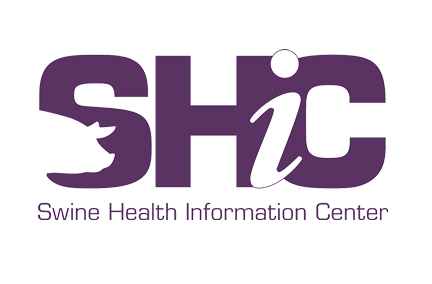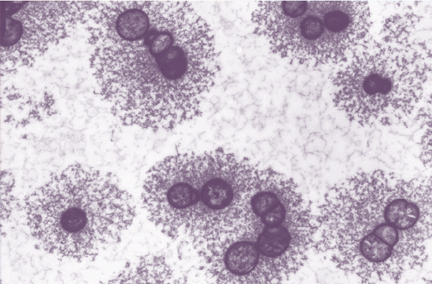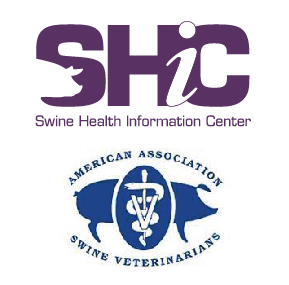

When the Swine Health Information Center (SHIC) was formed July 1, 2015, it was with the understanding it was a five-year project. With that in mind, the Center would sunset on July 1, 2020, without an extension. The proposal language surrounding the Center’s formation stated, “Funding of the Center past its five-year life will depend on it being able to demonstrate a sufficient return on the investment to justify keeping it running.” Following presentation and approval of SHIC’s 2019 Progress Report on January 7, 2020, the National Pork Board (NPB) Board of Directors voted to extend the project for two more years, using SHIC’s existing funds. NPB also agreed to continued consideration of future funding and coordination beyond the two-year extension. SHIC will remain active and engaged in its mission which states, “The mission of the Swine Health Information Center is to protect and enhance the health of the United States swine herd through coordinated global disease monitoring, targeted research investments that minimize the impact of future disease threats, and analysis of swine health data.”

In the 2019 Swine Health Information Center (SHIC) Program Update, it is clear African swine fever (ASF) required significant resources. However, SHIC remained faithful to its mission to protect the health of the US swine herd through comprehensive preparedness, monitoring, response, and communications activities. The 2019 Progress Report details progress in each of these areas. Below you will find a summary in the specific program areas.
Preparedness Activities on Behalf of US Swine Herd Health
Monitoring Swine Disease Transmission Vectors
Improving Transport Biosecurity Domestically
Investigating Common Inputs as Vectors for Disease Introduction
Improving Swine Health Information
Surveillance and Discovery of Emerging Disease
Responding to Emerging Disease
African Swine Fever

The Swine Health Information Center (SHIC) continues to monitor Streptococcus equi subspecies zooepidemicus (S. zooepidemicus) in the US. This includes recent cases in Pennsylvania where, on December 23, 2019, their Department of Agriculture designated S. zooepidemicus in swine a dangerous transmissible disease (DTD). By Pennsylvania law, the state’s Department of Agriculture has authority to monitor the domestic animal population of the Commonwealth to determine the prevalence, incidence, and location of transmissible diseases of animals. The DTD designation provides legislative authority for requiring reporting of S. zooepidemicus along with penalties for noncompliance in Pennsylvania.
Per communication from Dr. Kevin Brightbill, Pennsylvania state veterinarian, the Pennsylvania Department of Agriculture, in conjunction with USDA Veterinary Services, is investigating the death of a cull sow with heavy growth of S. zooepidemicus. The death occurred at an approved livestock market. The adult sow was in poor condition and consigned by a small livestock dealer along with four other sows in a similar state. Tissues from the sow were submitted for African swine fever and classical swine fever surveillance purposes.
Traceback revealed the sow passed through a livestock dealer with a recent spike in mortality in their holding facility. The dealer purchased 11 cull sows from another auction and over a couple days, seven of the 11 died abruptly. Unfortunately, the dealer then marketed the four surviving sows to a large slaughter only livestock auction with one more death. The three remaining sows have been confirmed to have gone to slaughter. The traceback premises where the sows farrowed is currently under quarantine for S. zooepidemicus. The remainder of swine on the premises will be moved by permit directly to a slaughter facility with no possibility of diversion.
Dr. Brightbill said, “It was a difficult decision to list S. zooepidemicus as a DTD, however, it is a necessary step to do our part to help prevent this devastating emerging disease. Unfortunately, when there is a potential to make a dime on less than healthy cull sows and boars there is an opportunity to transfer disease along with it.”

On December 4, 2019, the Swine Health Information Center (SHIC) and American Association of Swine Veterinarians (AASV) sponsored a webinar titled, “Disease Management of Viral Myelitis.” Designed for veterinary practitioners and pork producers, information presented by diagnosticians as well as case studies provided insight into symptoms of these central nervous system (CNS) diseases, appropriate steps for diagnosis, as well as on-farm experience with porcine astrovirus 3 (PoAstV3), porcine sapelovirus (PSV), and porcine teschovirus (PTV). A video of the webinar presentations is available here.
Dr. Matthew Sturos, University of Minnesota Department of Veterinary Population Medicine, noted symptoms of CNS disease include incoordination/ataxia, weakness, head tilt, inappropriate mentation, circling, blindness, knuckling, tremors, paddling, paresis, and convulsions. Each of these symptoms has a root cause from differing segments of the CNS: brain, vestibular, or cervical.
However, an appropriate diagnosis is important because other causes of similar symptoms can be the result of non-spinal diseases such as arthritis, osteochondrosis, ionophone toxicity, and porcine stress-like syndrome. Dr. Sturos also said vertebral fracture and osteomyelitis or abscesses can create similar conditions in pigs. Additionally, selenium toxicity should be examined as well as salt and water deprivation. Other potential causes are infectious diseases viral poliomyelitis, edema disease, botulism, and tetanus.
Diagnostic assays for viral myelitides require fresh tissues for testing and analysis. During the webinar, Dr. Sturos detailed the appropriate sampling options for accurate diagnoses. In addition to the processes for sample collection, he also said it will help the pathologist when information included with the submission includes the CNS signs. He also recommends submission of non-CNS tissues for the best testing protocol and results.
Dr. Bailey Arruda, Iowa State University Veterinary Diagnostic Lab, further emphasized the necessity of aseptic collection. She also described the necessity of choosing the right pigs for tissue collection, noting disease progression will impact the accuracy of analysis.
With PSV and PTV, Dr. Arruda noted affected herds have pigs from 4 to 16 weeks old impacted with a case fatality rate of 90% to 100%. The diseases duration is less than four days in individual pigs, weeks to months in a group of pigs, and months to years in intergroup settings. PoAstV3 has been diagnosed around the world with five lineages identified. Pigs from 20 days of age through sows are impacted when infection is present. There is a case fatality rate of 90% to 100%. Treatment has been unrewarding.
Dr. Arruda said fecal shedding of all three viruses is common. She also said development of CNS disease is relatively uncommon, pointing to risk factors for infection of co-infections, genetics, immune response, and maternal immunity as well as diet and microbiota.
In addition to the technical information provided by Drs. Sturos and Arruda, three swine practitioners shared their experience with CNS diseases. Dr. Grant Allison, Walcott (Iowa) Veterinary Clinic, described a client’s PoAstV3 infection. Dr. Pete Thomas, Iowa Select Farms, explained how they managed a PTV diagnosis. And Dr. Aaron Lower, Carthage (llinois) Veterinary Service, detailed their client’s PSV experience. These case studies illuminated the realities on the farm including diagnosis, recovery, treatments, and learning.
Dr. Arruda concluded the webinar by exploring scientific design to test management options. She said an evidence-based approach is necessary. “We need more information to make decisions for defensing versus reacting,” she remarked. The goal is better understanding of the viruses, hosts, and environment. With her proposed design for exploring CNS, the important of maternal immunity, herd and individual impact, co-infection and/or prior infection role in severity, along with determining other risk factors could help predict infections.

In a recently completed study funded by the Swine Health Information Center (SHIC), contemporary emerging and foreign animal disease (FAD) surveillance practices were studied. One of the study’s authors, Dr. Jeff Zimmerman of Iowa State University, points out the dramatic change the domestic pork production industry has experienced over just a few years with much larger herds and populations in regional areas. “Bigger herds have much more traffic including trucks, people, feed, and movement of pigs between sites,” he observed. “That increases the likelihood and speed of disease transmission.”
In the executive summary for the study, “Development of regional surveillance systems for emerging and foreign animal diseases of swine,” it states, “Effective surveillance should efficiently collect data for production and/or business planning, document freedom from specific pathogens, and guide a rapid, effective response to emerging and/or FADs. Current on-farm or regional surveillance programs routinely fail to meet these targets. In part, this is because the industry has changed over time and no longer conforms to the assumptions under which our surveillance systems were originally designed. As a result, surveillance either is not done or is done ineffectively.”
Ineffectiveness of current surveillance practices was confirmed with the outbreak of porcine epidemic diarrhea virus (PEDV) when the disease progressed at a pace far faster than confirmed diagnosis. Syndromic surveillance delayed detection of foot-and-mouth disease in Europe and classical swine fever (CSF) in Europe and South America. In the past, random sampling was the standard, however, Dr. Zimmerman points out this assumes the disease is also random which the industry recognizes is not the case.
In the course of the study, the researchers compared five methods for surveillance. Their work determined spatially balanced surveillance evaluating diagnostic submissions could provide the efficient system being sought. “Veterinary diagnostic labs have massive samples coming in on a routine basis,” Dr. Zimmerman stated. These samples reflect the reality of current production practices with continuous flows of pigs.
“Spatially balanced surveillance detected pathogens earlier at lower prevalence,” Dr. Zimmerman said. “This process is more likely to detect a pathogen than simple random sampling.” Other advantages are having the samples on hand at diagnostic labs and providing for continuous surveillance efforts. “If there are concerns over African swine fever or other pathogens, this system could be implemented at a pretty low cost,” he concluded.
Work so far has focused on submissions to the Iowa State University Veterinary Diagnostic lab. Dr. Zimmerman sees next steps including expanding to include other labs as well as working with USDA partners.

The overall percentage of PRRSV positive cases in December for adult/sow farms was 24.99%. This level of detection for the adult/sow farm is the highest since 2013 for the months of November and December. After four months of consecutive increase in percentage of PRRS positive results for wean to market cases, there was a decrease in the percentage of positive results in December. The number of PRRSV positive cases from December 1 to 28 was above expected in Minnesota and Nebraska. The overall percentage of PEDV RNA positive cases in December was 15.64%. Increased detection of PEDV RNA above expected levels December 1 to 14 was mostly driven by wean-to-market cases, primarily from Iowa. The percentage of PEDV RNA positive cases for adult/sow farm cases was 8.46% in December, the lowest historical December level for adult/sow farm. The overall percentage of PDCoV RNA positive cases in December was 4.59%. Increased detection of PDCoV RNA above expectations December 1 to 22 was mostly driven by wean-to-market animals, primarily from Iowa. There were four positive cases for TGEV RNA over a total of 2,802 cases tested in December. All positive cases were detected in Iowa. The level of detection of Mycoplasma hyopneumoniae during December followed the expected predicted decrease in detection for this period of the year. Read the entire report here.

African swine fever (ASF) continues to spread with an outbreak in North Sumatra, Indonesia confirmed, making this the 11th country in the region to be affected. In Belgium, remains of a wild boar were discovered outside the inner observation zone, raising concern. As ASF gets closer to Germany, the country sets preparedness and early response protocols. Representatives from Germany have also formed a joint task force with counterparts from Poland for control efforts. Classical swine fever has also been discovered in Japan’s Okinawa prefecture for the first time in 33 years.
Copyright 2024 | Swinehealth.org | Website by Heartland Marketing Group